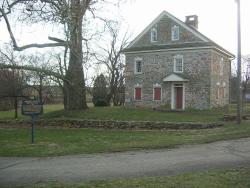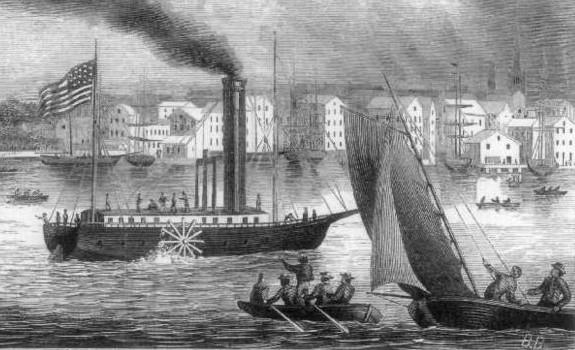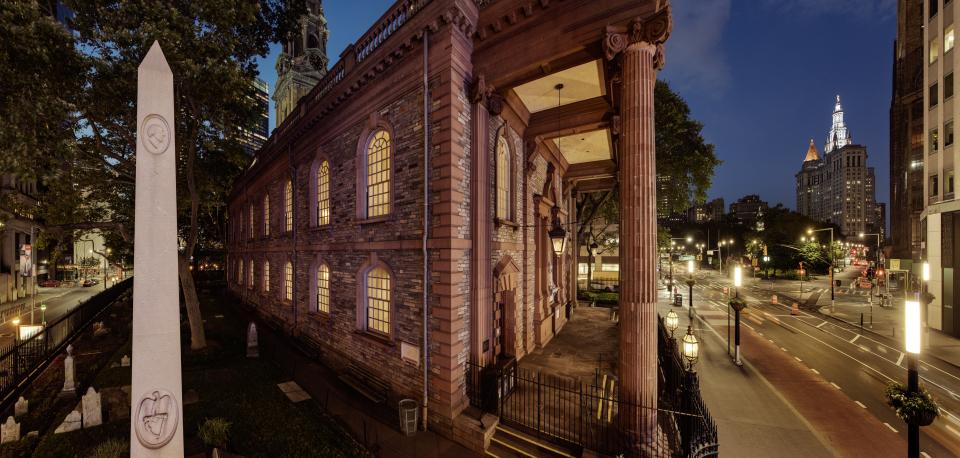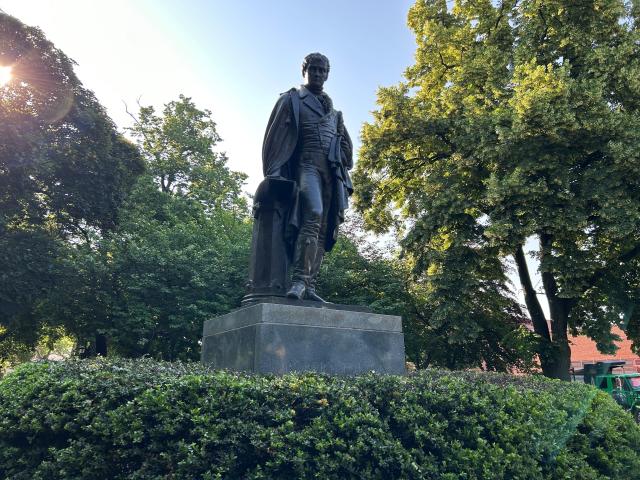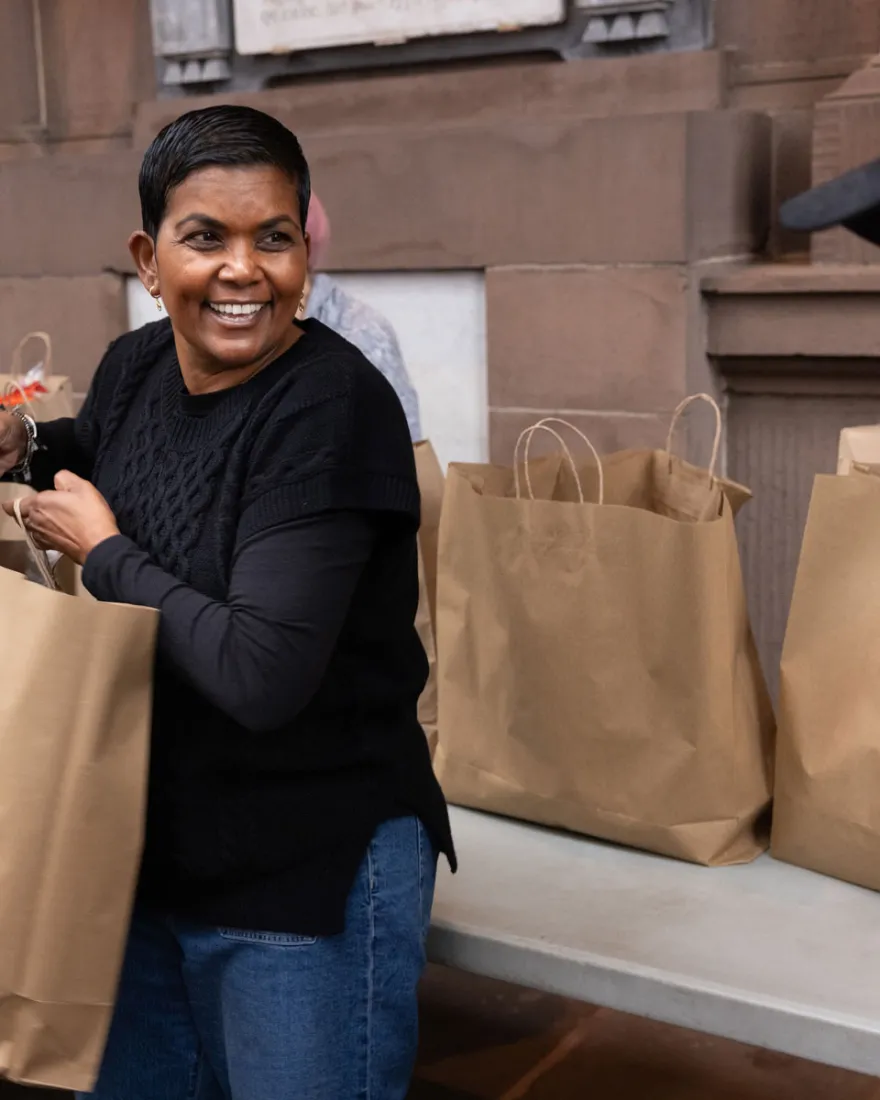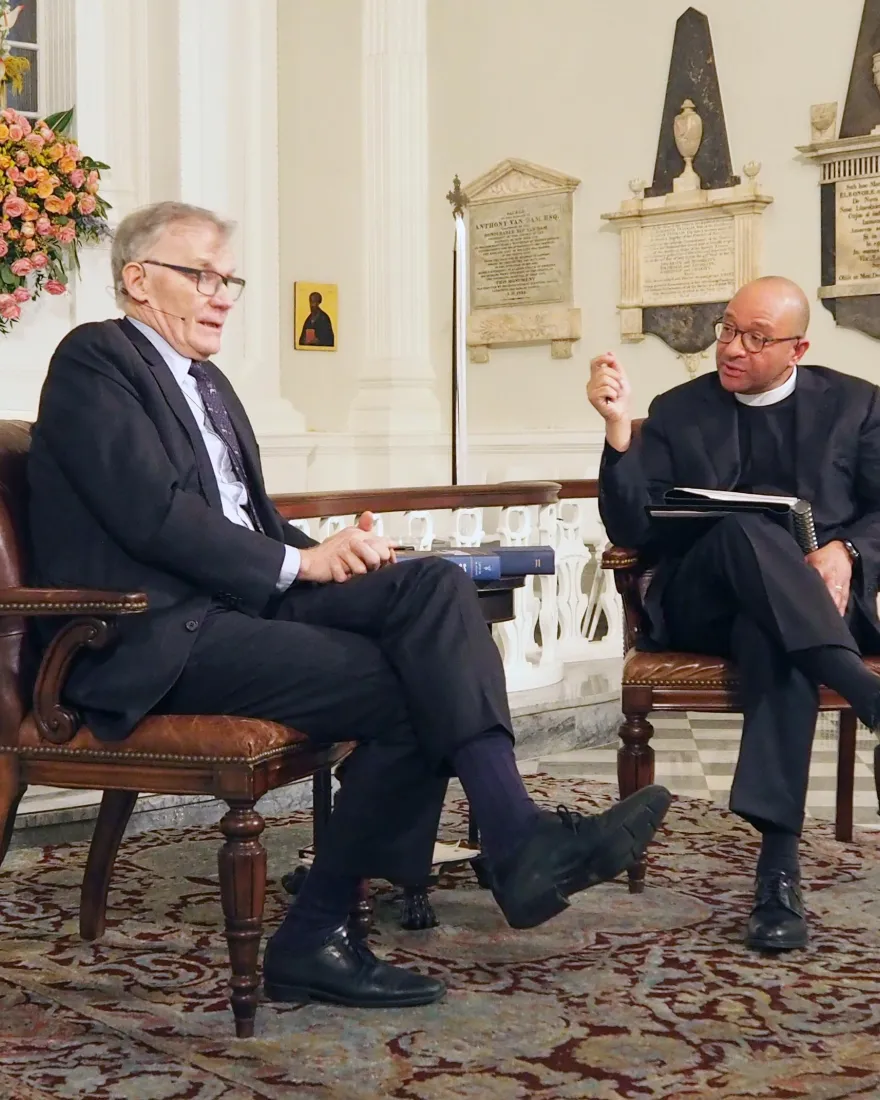Robert Fulton: More than the Steamboat

For many decades, perhaps even until today, schoolchildren in the United States have known something about Robert Fulton. Usually one thing, that he invented the steamboat.
That’s not exactly true, although Fulton, who is buried in Trinity's churchyard, definitely parlayed his skill as an engineer, technologist, and businessman to create a highly profitable enterprise.
Born in 1765 in a farmhouse in rural Pennsylvania, about 50 miles west of Philadelphia, Robert Fulton initially wanted to make his name as a portrait painter. Among his subjects was Benjamin Franklin. Fulton changed careers to concentrate on building ships and canals and, once, even a submarine.
John Fitch had already built a working steamship. Fulton’s talent was devising a method for making the new invention commercially viable, similar to what happened a century later with Henry Ford and the motorcar.
Fulton first began with regular trips between New York City and Albany, the state capital of New York, in the Clermont. His business grew to include six major rivers and Chesapeake Bay.
Fulton died in 1815 at age 49 from tuberculosis and pneumonia following a fall into the frozen Hudson River while rescuing a friend. In a fascinating twist of fate, that friend was Thomas Addis Emmett, who is honored with a obelisk cenotaph in the Churchyard of St. Paul's Chapel.
New York City has remembered Robert Fulton by placing his name on streets and avenues in all five boroughs. He's also commemorated in multiple statues around the city, including the one seen in the photo above in the Brooklyn neighborhood of Bedford-Stuyvesant.
It is poetic justice that Fulton should continue to rest in the spot where he was interred, for at the front of the quaint old burying-ground run the electric cars, at the rear the elevated railroad, and at the foot of Rector Street, the other boundary, some of the fastest vessels in the bay make their landings.
An opinion written in the publication "Scientific American," December 21, 1901
Robert Fulton appears to have had only a couple of direct connections to Trinity, having twice rented church-owned property on Chambers Street. However, his wife Harriett was a member of the prominent Livingston family which is why Fulton is interred in the Livingston vault, the final resting place of the Livingstons, at Trinity. All remained quite simple until 86 years after his death.
On December 21, 1901, the publication Scientific American provided an account of activities earlier that month when a monument commissioned by the American Society of Mechanical Engineers honoring Robert Fulton was unveiled in Trinity Churchyard, including this observation: “It is poetic justice that Fulton should continue to rest in the spot where he was interred, for at the front of the quaint old burying-ground run the electric cars, at the rear the elevated railroad, and at the foot of Rector Street, the other boundary, some of the fastest vessels in the bay make their landings.”
In fact, Fulton's resting place has changed. During the construction of the Manning Wing of the church in the mid-1960s, the Livingston vault was moved to the north churchyard. The memorial monument to Robert Fulton remains in the south churchyard, a few feet west of the grave of Alexander Hamilton.






